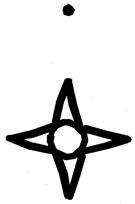Anthropology, Department of

Nebraska Anthropologist
Date of this Version
2004
Document Type
Article
Abstract
Drawing on a body of classical and contemporary ethnographic resources, one finds a number of coriflicting conclusions and assumptions in not only the evolutionary role of the extended family and its functions, but also-in a post-colonial context-how these units as well as their roles and functions change. When comparing a number of sources, we find that extended families are explained in diametrically opposed terms (e.g. some say extended families result from hunter-gatherer societies while others attribute it to agricultural groups), creating conflicting theory obviously not considered together as often enoughhence the necessity of comparative study between traditionally agricultural Hopi and hunter-gathering Sioux.
By comparing these two drastically different groups, through kinship terminology to particular facets of the two family extensions, one concludes that the two extended families looked at drastically differ in function, while remaining quite similar in form. On the one hand, traditional Hopi extended families functioned as an economic extension, whereas the Sioux extended families functioned primarily as a military extension.


Comments
Published in Nebraska Anthropologist Vol. 19 (2003-2004). Copyright © Benjamin Grant Purzycki; published by The University of Nebraska-Lincoln AnthroGroup.